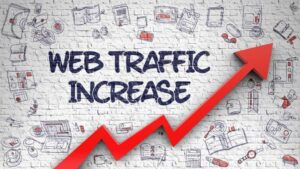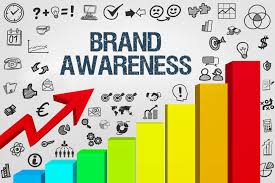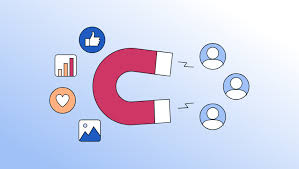Understanding the Importance of Website Traffic for Business Success

Are you a business owner striving for success in the digital realm? If so, let’s talk about the lifeblood of any online venture: website traffic. We can all agree that an enticing website and remarkable products or services are essential. However, without a steady stream of visitors, your online presence might as well be a hidden treasure buried in the depths of the internet. But fear not!
In this article, we’ll delve into why website traffic holds the key to unlocking your business’s success and explore actionable strategies to boost those visitation numbers. So, grab a cup of coffee, sit back, and prepare to uncover the secrets behind driving traffic to your virtual storefront
Definition of Website and Social Media Traffic
Website traffic refers to the number of visitors a website receives. It serves as a measure of the website’s popularity and effectiveness. Understanding website traffic is crucial for businesses as it indicates the level of interest and engagement their target audience has.
By analyzing website traffic, businesses can identify which pages or content attract the most visitors and optimize them further. This data also helps assess marketing efforts, conversion rates, and overall website performance. For instance, if a business notices a decline in traffic to a specific page, they can investigate and make necessary improvements to retain or regain visitors.
Website traffic data provides valuable insights that inform strategic decisions, such as content creation, search engine optimization, and marketing campaigns, thereby helping businesses maximize their online presence and reach their target audience effectively.
The Role of Website Traffic in Business Success
Increased Visibility and Brand Awareness

Increased visibility and brand awareness are vital aspects of the importance of website traffic. When your website receives a steady flow of visitors, it exposes your brand to a larger audience and increases its visibility in the crowded digital landscape. This visibility creates brand recall, making it more likely for users to remember your brand when they are in need of your products or services.
Lead Generation and Customer Acquisition

Lead generation and customer acquisition are fundamental aspects of business success that are heavily reliant on website traffic. By driving a steady flow of visitors to your website, you increase the chances of converting them into potential leads and eventually customers. With more website traffic, you broaden your reach and attract a larger audience who may be interested in your products or services.
For instance, if you run an e-commerce store, increased website traffic can translate into more sales and revenue. Similarly, for a B2B company, higher traffic means more opportunities to capture leads through contact forms, newsletter sign-ups, or gated content. To optimize lead generation and customer acquisition, it’s crucial to provide valuable content, clear call-to-actions, and optimize landing pages that encourage visitors to take the desired action.
Improved Search Engine Rankings

Improved search engine rankings are vital for the success of any business website. When your website ranks higher in search engine results, it becomes more visible to potential customers. This increased visibility leads to more organic traffic and exposure to a larger audience. By optimizing your website for search engines through techniques like keyword research, on-page optimization, and link building, you can improve your rankings.
Enhanced Conversion Rates and Sales on Social Media Platform

High website traffic can significantly impact conversion rates and boost sales. When you have a steady stream of relevant visitors, you have more opportunities to convert them into paying customers. The larger the pool of potential customers, the greater the chances of generating sales.
Increased website traffic allows you to test and optimize your conversion strategies, such as improving your call-to-action buttons or simplifying the checkout process. By analyzing visitor behavior and feedback, you can identify and address any barriers that may hinder conversions.
For instance, if you observe that a significant number of visitors abandon their shopping carts at the checkout stage, you can implement strategies like offering incentives or simplifying the payment process to increase conversions.
Remember, the higher your website traffic, the more potential customers you have the chance to convert, ultimately leading to increased sales and revenue. And also by redirecting the audience to your site.
Factors Influencing Website Traffic
Quality and Relevance of Content

The quality and relevance of your website’s content significantly impact its traffic. High-quality content that is informative, engaging, and offers value to users attracts more visitors. By providing relevant and helpful information, you increase the likelihood of users returning to your website and recommending it to others.
Additionally, creating in-depth and comprehensive content enhances your chances of ranking higher in search engine results, driving organic traffic.
For example, if you run a cooking blog, publishing well-researched recipes with useful tips and stunning visuals will attract more food enthusiasts to your site. Remember, compelling content keeps users engaged and encourages them to explore further, resulting in increased website traffic.
Search Engine Optimization (SEO)

Search Engine Optimization (SEO) is a vital aspect in driving website traffic. By optimizing your website’s content and structure according to search engine guidelines, you can improve your visibility in search results. This means that when users search for relevant keywords related to your business, your website is more likely to appear higher in the search rankings. SEO techniques include keyword research, creating high-quality content, optimizing meta tags, and building backlinks.
For example, incorporating relevant keywords into your page titles and headings can help search engines understand the context of your content. Implementing SEO strategies can significantly increase organic traffic to your website, attracting more potential customers and boosting business success.
Social Media Engagement

Social media engagement is a vital component of increasing website traffic. By actively participating on platforms such as Facebook, Twitter, and Instagram, businesses can attract a wider audience and drive more traffic to their websites. Engaging with followers through thoughtful posts, responding to comments, and sharing relevant content can create a sense of community and encourage users to visit the business’s website.
Additionally, social media can serve as a platform for sharing blog posts, promotions, and product updates, further driving traffic. By strategically utilizing social media engagement, businesses can expand their reach and boost website traffic effectively.
Online Advertising and Paid Traffic

Paid advertising is an effective strategy to boost website traffic. By investing in online ads, businesses can reach a wider audience and drive targeted traffic to their website. Platforms like Google Ads and social media advertising allow businesses to target specific demographics and interests, ensuring that their ads are seen by the right people.
With paid traffic, businesses have control over their budgets and can track the effectiveness of their campaigns through various metrics, such as click-through rates and conversion rates. By optimizing ad campaigns and refining targeting strategies, businesses can maximize their return on investment and attract more potential customers to their website.
Measuring Website Traffic
Web Analytics Tools

Web analytics tools provide valuable insights into website traffic, helping businesses understand their audience and optimize their strategies. These tools track metrics like page views, unique visitors, bounce rate, and conversion rates. By analyzing this data, companies can identify which pages are performing well, track user behavior, and measure the effectiveness of marketing campaigns.
For instance, they can identify the sources of traffic, such as search engines or social media platforms,and allocate resources accordingly. Web analytics tools enable businesses to make data-driven decisions, refine their marketing efforts, and improve overall website performance.
Key Metrics to Track
![]()
When assessing the importance of website traffic, tracking key metrics is vital. Monitoring these metrics provides valuable insights and helps evaluate the effectiveness of your strategies. One key metric is the number of unique visitors, which indicates the reach of your website.
Additionally, tracking the bounce rate helps assess user engagement and website content relevance. Conversion rate is another crucial metric, measuring the percentage of visitors who take a desired action, such as making a purchase or filling out a form. By regularly monitoring these metrics, businesses can identify areas of improvement and optimize their website to drive better results.
Interpreting and Using Traffic Data
- Identify popular content: Analyzing website traffic data helps identify the most visited pages or blog posts on your site. This information can guide content creation by focusing on topics that resonate with your audience.
- Analyze user behavior: By examining traffic data, you can gain insights into user behavior, such as time spent on site, bounce rate, and conversion rates. This data allows you to optimize your website and improve user experience.
- Track traffic sources: Understanding where your website traffic comes from (e.g., search engines, social media, referrals) helps you assess the effectiveness of marketing efforts. Adjust your strategy accordingly to maximize traffic from the most valuable sources.
- Set conversion goals: Utilize traffic data to set conversion goals and measure performance. Determine key metrics like click-through rates, form submissions, or purchases, and monitor progress towards achieving those goals.
- Identify opportunities: Analyzing traffic data can reveal untapped opportunities, such as new target demographics, geographic locations, or popular referral sources.
Use these insights to refine your marketing strategy and drive more targeted traffic to your website.
Remember, the interpretation of traffic data should always be accompanied by actionable steps to improve performance and achieve your business objectives.
Strategies to Increase Website Traffic
Optimizing for Search Engines

Optimizing your website for search engines is vital to attract website traffic. Search engine optimization involves improving your site’s visibility in search engine results pages (SERPs). By incorporating relevant keywords, creating high-quality content, and optimizing meta tags, titles, and descriptions, you can improve your chances of appearing higher in search rankings.
Additionally, optimizing your site’s loading speed, mobile responsiveness, and user experience can also contribute to better search engine visibility. For instance, providing descriptive alt tags for images and using header tags to structure your content can enhance both search engine rankings and user experience. By implementing effective SEO strategies, you can increase your website’s organic traffic and reach a wider audience.
Content Marketing and Blogging

Content marketing and blogging are effective strategies to drive website traffic. By consistently creating valuable and relevant content, businesses can attract and engage their target audience. Publishing blog posts, articles, guides, or videos that address their audience’s pain points or provide solutions establishes the business as a credible source of information.
This not only helps in building trust with potential customers but also increases the likelihood of social media shares and backlinks, which can contribute to higher search engine rankings. By optimizing content for relevant keywords and promoting it through various channels, businesses can drive organic traffic to their website and boost their overall online visibility.
Social Media Marketing

Social media marketing plays a significant role in driving website traffic. By leveraging popular platforms such as Facebook, Instagram, and Twitter, businesses can engage with their target audience and promote their website effectively. Sharing valuable content, running targeted ads, and utilizing relevant hashtags can attract users to visit the website.
For example, creating visually appealing graphics or videos that resonate with the audience’s interests can generate click-throughs.
Additionally, encouraging user-generated content and fostering online discussions can increase brand visibility and attract organic traffic. Social media marketing provides a valuable avenue for businesses to expand their online reach and drive website traffic.
Email Marketing and Newsletters


Email marketing and newsletters are effective strategies to drive website traffic. By building an email subscriber list, businesses have a direct communication channel with their audience. Sending regular newsletters with valuable content or product updates keeps subscribers engaged and entices them to visit the website. Including compelling call-to-action buttons and relevant links can lead to increased website traffic.
For example, a fashion retailer can send a newsletter showcasing their latest collection and directly link to the corresponding product pages. The key is to provide value and relevant information to subscribers, encouraging them to click through to the website.
Paid Advertising and Affiliate Marketing

Paid advertising and affiliate marketing are effective strategies to boost website traffic. By investing in targeted ads and collaborations with relevant affiliates, businesses can reach a wider audience and drive traffic to their site. Paid advertising allows for precise targeting, ensuring ads are shown to the right people at the right time.
Additionally, affiliate marketing enables businesses to leverage the reach and influence of other websites or influencers in their niche.
For example, partnering with industry bloggers or social media influencers can lead to increased traffic through their promotional efforts. By allocating resources to these tactics, businesses can enhance their online visibility and attract more visitors to their website.
Summary
In today’s digital era, website traffic plays a crucial role in achieving business success. It serves as a measure of online visibility, indicating how many people are visiting a website. More importantly, high-quality traffic can lead to increased leads, conversions, and ultimately, revenue generation. Understanding the importance of website traffic helps businesses optimize their online presence, attract the right audience, and improve their overall marketing strategies.
By analyzing this data, businesses can make informed decisions, drive targeted traffic, and ensure their website becomes a valuable asset in achieving their goals.
